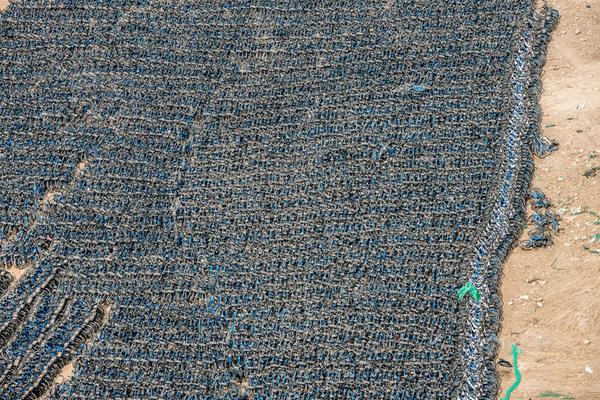
1. Check the other storage space in Mac OS X if you have how many files and files on your MacIf you are interested in being divided into "other" storage space, you can view it through the about local window panel. Click the Apple menu and then select About This Machine. Check the storage drop-down interface to find other data.
2. You can try to clear the system cache to free up memory. System updates take up memory: When a new MacOS update is installed, the system will take up a lot of memory. You can wait for the update installation to be completed before cleaning up the memory.
3. Method 1: Use cleaning tools. Mac computers come with some tools to clean up memory, such as "Terminal", "Activity Monitor", "Disk Utility", etc. In addition, there are some third-party cleaning tools, such as CleanMyMacDisk Clean Pro, MacClean, etc.
4. Close unnecessary programs.When running multiple programs, the application in use will occupy a certain amount of memory space. By closing unnecessary programs, the occupied memory space can be released. Just select the program you want to close in the activity monitor, and then click the "Exit Process" button.

1. You can delete files in the library on the Mac computer to free up disk memory. First, first of all, open the macbook Apple computer and open the "Resource Library", as shown in the figure below. Developer users can click the subfolder of "Developer", as shown in the figure below.
2. Clean up disk space. First of all, you can clean up unnecessary files on the hard disk to free up disk space. You can try to delete files, applications and download files that are no longer needed. You can use the right-click tool to completely uninstall the software. Clean up the cache. Secondly, you can clean up some cache garbage on Mac and uninstall unused applications.
3. Check the other storage space in Mac OS X if youIf you are interested in how many files and directories are divided into "Other" storage space on your Mac, you can check them through the About Native window panel. Click the Apple menu and then select About This Machine. Check the storage drop-down interface to find other data.
First, turn on the mobile phone, find the setting icon of the iPhone on the desktop, and enter the settings. Click to enter the settings of the iphone, and click the same option. Then click General, and you can see the iPhone storage options.
Delete software or files or update files to free up a large amount of memory.
Restarting the device sometimes the system occupies too much, which may be an abnormal display problem. You can restart your device and then go to the iPhone storage space to view it. In the process of restarting the device, the system can also automatically clean up some cache data. Use the assistant to clean up the garbage in the equipment.
Restarting the Mac computer can refresh the system cache, clean up the cache of some applications, install system updates, and perhaps more significantly clear these two: virtual memory swap file and sleepimage. If you rarely restart your Mac computer, these two can become very large.
Clean up cache files on Mac Cache files are files that help Mac run programs more smoothly. Deleting cache files will not affect the normal use of the Mac, but will free up more disk space. When the disk space is insufficient, we recommend deleting the cache file. Open the Finder window, and then select Go in the menu bar.
Method 1: Use cleaning tools Mac computers come with some tools to clean up memory, such as "Terminal", "Activity Monitor", "Disk Utility", etc. In addition, there are some third-party cleaning tools, such as CleanMyMacDisk Clean Pro, MacClean, etc.
Delete unnecessary applications to improve Mac running speedWe often ignore many uncommon applications in the system, most of which are outdated and not used frequently. Using CleanMyMac, we can clear them at once, so as to improve the running speed of Mac and alleviate the problem of memory tightness.
The cache cleaning operation is as follows: Open CleanMyMac3 and click the "System Garbage" option on the left in the interface. In this interface, there will be some brief introductions to this function, including the functions it can achieve and what aspects it mainly targets.
Restarting Apple computers: Sometimes, restarting Mac computers can clear temporary data and redundant processes in memory, thus improving system performance. Update the operating system and applications: By updating the operating system and applications, optimization and performance improvement can be obtained, so as to improve memory management and utilization efficiency.
Clean up cache files: cache files may take up a lot of disk space and increase memory pressure.
The clearing steps are as follows: click the Apple icon in the upper left corner, select "About This Machine", and click "Storage" in the pop-up window. Click the management button at the bottom to see various file categories in the pop-up window.
Close unnecessary applications: check and close the applications you are running but don't need. This will free up system memory and provide more available memory for other applications. Restart Mac: By restarting the computer, you can clear the temporary data and cache in the system memory, so as to restore the efficiency of memory use.
Activity Monitor: Open the "Activity Monitor" application in the "Utilities" folder. Through this application, you can view the running processes and the amount of memory they use. If you find that a process takes up too much memory, you can choose to close or restart the process.
Mac can use the following two solutions to release "other" memory space: Method 1: Delete via Finder Open the current user folder in "Finder", select "View Display Options" in the right-click menu, and then check the "Library" folder.
Restart the computer: Sometimes restarting can clean up the memory and free up the occupied resources.Close unnecessary applications: check the running applications and close the applications you don't need. Each application will take up part of the memory, and closing unnecessary applications can free up memory resources.
In this regard, you can use some third-party optimization software to clean up unnecessary files and junk data. Closing unnecessary applications and windows. Unused applications and windows take up too much memory space, causing the system to run slowly.
To clean up mac system data, you can refer to the following steps: use the cleaning tool. For example, Mac Disk Manager combines practical functions such as disk cleaning and disk speed measurement. Close unnecessary programs.
How to clean up the lack of memory in the Apple computer system: Method 1, first, find the "launchpad" setting in the "dock" at the bottom of the Apple computer desktop and click to open. 2. Then expand the "Other" folder and open the "Activity Monitor" next step.
Bulk grain HS code insights-APP, download it now, new users will receive a novice gift pack.
1. Check the other storage space in Mac OS X if you have how many files and files on your MacIf you are interested in being divided into "other" storage space, you can view it through the about local window panel. Click the Apple menu and then select About This Machine. Check the storage drop-down interface to find other data.
2. You can try to clear the system cache to free up memory. System updates take up memory: When a new MacOS update is installed, the system will take up a lot of memory. You can wait for the update installation to be completed before cleaning up the memory.
3. Method 1: Use cleaning tools. Mac computers come with some tools to clean up memory, such as "Terminal", "Activity Monitor", "Disk Utility", etc. In addition, there are some third-party cleaning tools, such as CleanMyMacDisk Clean Pro, MacClean, etc.
4. Close unnecessary programs.When running multiple programs, the application in use will occupy a certain amount of memory space. By closing unnecessary programs, the occupied memory space can be released. Just select the program you want to close in the activity monitor, and then click the "Exit Process" button.

1. You can delete files in the library on the Mac computer to free up disk memory. First, first of all, open the macbook Apple computer and open the "Resource Library", as shown in the figure below. Developer users can click the subfolder of "Developer", as shown in the figure below.
2. Clean up disk space. First of all, you can clean up unnecessary files on the hard disk to free up disk space. You can try to delete files, applications and download files that are no longer needed. You can use the right-click tool to completely uninstall the software. Clean up the cache. Secondly, you can clean up some cache garbage on Mac and uninstall unused applications.
3. Check the other storage space in Mac OS X if youIf you are interested in how many files and directories are divided into "Other" storage space on your Mac, you can check them through the About Native window panel. Click the Apple menu and then select About This Machine. Check the storage drop-down interface to find other data.
First, turn on the mobile phone, find the setting icon of the iPhone on the desktop, and enter the settings. Click to enter the settings of the iphone, and click the same option. Then click General, and you can see the iPhone storage options.
Delete software or files or update files to free up a large amount of memory.
Restarting the device sometimes the system occupies too much, which may be an abnormal display problem. You can restart your device and then go to the iPhone storage space to view it. In the process of restarting the device, the system can also automatically clean up some cache data. Use the assistant to clean up the garbage in the equipment.
Restarting the Mac computer can refresh the system cache, clean up the cache of some applications, install system updates, and perhaps more significantly clear these two: virtual memory swap file and sleepimage. If you rarely restart your Mac computer, these two can become very large.
Clean up cache files on Mac Cache files are files that help Mac run programs more smoothly. Deleting cache files will not affect the normal use of the Mac, but will free up more disk space. When the disk space is insufficient, we recommend deleting the cache file. Open the Finder window, and then select Go in the menu bar.
Method 1: Use cleaning tools Mac computers come with some tools to clean up memory, such as "Terminal", "Activity Monitor", "Disk Utility", etc. In addition, there are some third-party cleaning tools, such as CleanMyMacDisk Clean Pro, MacClean, etc.
Delete unnecessary applications to improve Mac running speedWe often ignore many uncommon applications in the system, most of which are outdated and not used frequently. Using CleanMyMac, we can clear them at once, so as to improve the running speed of Mac and alleviate the problem of memory tightness.
The cache cleaning operation is as follows: Open CleanMyMac3 and click the "System Garbage" option on the left in the interface. In this interface, there will be some brief introductions to this function, including the functions it can achieve and what aspects it mainly targets.
Restarting Apple computers: Sometimes, restarting Mac computers can clear temporary data and redundant processes in memory, thus improving system performance. Update the operating system and applications: By updating the operating system and applications, optimization and performance improvement can be obtained, so as to improve memory management and utilization efficiency.
Clean up cache files: cache files may take up a lot of disk space and increase memory pressure.
The clearing steps are as follows: click the Apple icon in the upper left corner, select "About This Machine", and click "Storage" in the pop-up window. Click the management button at the bottom to see various file categories in the pop-up window.
Close unnecessary applications: check and close the applications you are running but don't need. This will free up system memory and provide more available memory for other applications. Restart Mac: By restarting the computer, you can clear the temporary data and cache in the system memory, so as to restore the efficiency of memory use.
Activity Monitor: Open the "Activity Monitor" application in the "Utilities" folder. Through this application, you can view the running processes and the amount of memory they use. If you find that a process takes up too much memory, you can choose to close or restart the process.
Mac can use the following two solutions to release "other" memory space: Method 1: Delete via Finder Open the current user folder in "Finder", select "View Display Options" in the right-click menu, and then check the "Library" folder.
Restart the computer: Sometimes restarting can clean up the memory and free up the occupied resources.Close unnecessary applications: check the running applications and close the applications you don't need. Each application will take up part of the memory, and closing unnecessary applications can free up memory resources.
In this regard, you can use some third-party optimization software to clean up unnecessary files and junk data. Closing unnecessary applications and windows. Unused applications and windows take up too much memory space, causing the system to run slowly.
To clean up mac system data, you can refer to the following steps: use the cleaning tool. For example, Mac Disk Manager combines practical functions such as disk cleaning and disk speed measurement. Close unnecessary programs.
How to clean up the lack of memory in the Apple computer system: Method 1, first, find the "launchpad" setting in the "dock" at the bottom of the Apple computer desktop and click to open. 2. Then expand the "Other" folder and open the "Activity Monitor" next step.
HS code mapping for duty optimization
author: 2024-12-24 01:43Renewable energy equipment HS code mapping
author: 2024-12-24 01:24Pharma supply chain mapping by HS code
author: 2024-12-24 01:24HS code-based container stowage planning
author: 2024-12-24 00:37Metal scrap HS code classification
author: 2024-12-24 00:34How to reduce customs compliance risk
author: 2024-12-24 02:16Global sourcing risk by HS code
author: 2024-12-24 01:51Gourmet foods HS code classification
author: 2024-12-24 01:42Worldwide trade corridor mapping
author: 2024-12-24 01:39Global trade lead generation tools
author: 2024-12-24 01:10 HS code-based quota management
HS code-based quota management
577.27MB
Check Export planning using HS code data
Export planning using HS code data
517.57MB
Check Granular trade data by HS code subdivision
Granular trade data by HS code subdivision
274.25MB
Check How to align trade data with ERP systems
How to align trade data with ERP systems
923.44MB
Check HS code mapping tools for manufacturers
HS code mapping tools for manufacturers
312.68MB
Check HS code consulting for exporters
HS code consulting for exporters
154.74MB
Check HVAC equipment HS code mapping
HVAC equipment HS code mapping
688.53MB
Check How to navigate non-tariff barriers
How to navigate non-tariff barriers
683.97MB
Check HS code-based opportunity scanning
HS code-based opportunity scanning
864.18MB
Check HS code-driven logistics partner selection
HS code-driven logistics partner selection
252.17MB
Check Nutraceuticals HS code verification
Nutraceuticals HS code verification
643.18MB
Check How to implement JIT with global data
How to implement JIT with global data
692.19MB
Check Biodegradable materials HS code verification
Biodegradable materials HS code verification
668.79MB
Check HS code classification tools
HS code classification tools
887.37MB
Check How to use analytics for HS classification
How to use analytics for HS classification
816.35MB
Check End-to-end global logistics analytics
End-to-end global logistics analytics
878.81MB
Check Pharmaceutical imports by HS code
Pharmaceutical imports by HS code
656.55MB
Check Top trade data keywords for SEO
Top trade data keywords for SEO
171.98MB
Check HS code-driven supply chain benchmarking
HS code-driven supply chain benchmarking
572.51MB
Check How to leverage FTA data
How to leverage FTA data
453.71MB
Check HS code compliance for Pacific Island nations
HS code compliance for Pacific Island nations
947.41MB
Check Granular trade data by HS code subdivision
Granular trade data by HS code subdivision
537.86MB
Check HS code analytics for niche markets
HS code analytics for niche markets
352.44MB
Check Predictive container utilization analytics
Predictive container utilization analytics
368.26MB
Check Pharma excipients HS code classification
Pharma excipients HS code classification
353.65MB
Check How to choose correct HS code in ASEAN
How to choose correct HS code in ASEAN
852.88MB
Check How to use trade data for market expansion
How to use trade data for market expansion
265.26MB
Check Trade data-driven transport mode selection
Trade data-driven transport mode selection
682.14MB
Check How to comply with country-specific tariffs
How to comply with country-specific tariffs
961.74MB
Check HS code-based predictive analytics
HS code-based predictive analytics
777.74MB
Check How to detect supply chain inefficiencies
How to detect supply chain inefficiencies
398.33MB
Check HS code harmonization in NAFTA region
HS code harmonization in NAFTA region
444.97MB
Check Real-time freight schedule optimization
Real-time freight schedule optimization
219.31MB
Check Africa import data trends
Africa import data trends
486.15MB
Check HS code compliance training modules
HS code compliance training modules
576.49MB
Check International vendor verification
International vendor verification
467.96MB
Check
Scan to install
Bulk grain HS code insights to discover more
Netizen comments More
2869 Global trade intelligence benchmarks
2024-12-24 02:46 recommend
848 Paper and pulp HS code insights
2024-12-24 02:39 recommend
1531 Real-time shipment inspection data
2024-12-24 02:35 recommend
2326 Medical PPE HS code verification
2024-12-24 02:24 recommend
2562 Sustainable trade data analytics
2024-12-24 02:20 recommend